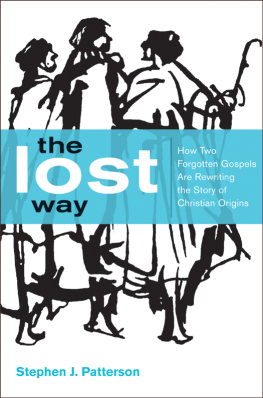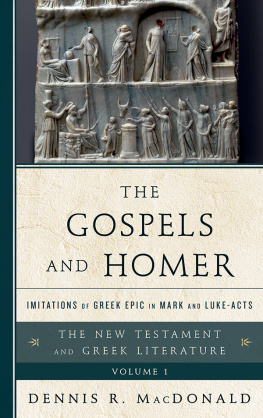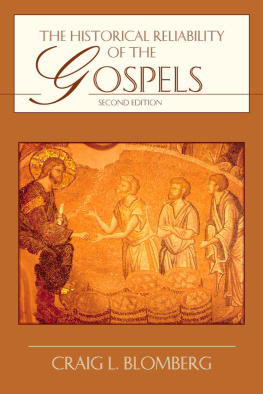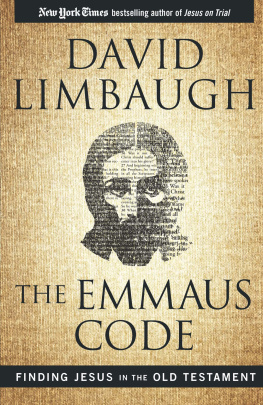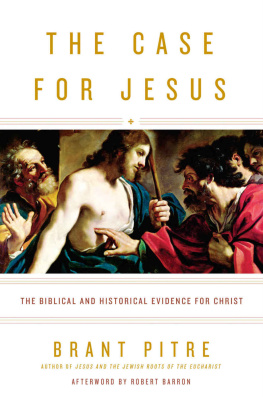Table of Contents
Landmarks
It is hardly surprising that Christian texts are our main source of information about the origins of Christianity. Most books on archery, baseball, or cooking are by enthusiasts of those activities. Christians were the most enthusiastic about Christianity and naturally wrote more about it. The four Gospels were, of course, written by advocates of belief in Jesus as the promised deliverer. They may therefore be said to be biased, in the sense that they are not impartial records but ones aiming to foster belief in Jesus Christ.
However, their bias does not mean we should distrust their record. An innocent man accused of a crime may have a deep interest in proving his innocence, but this bias is not a reason to dismiss evidence he produces. The question, then, is not whether the Gospel writers had an agenda, but whether they reported accurately.
Some sources, however, cannot be accused of bias in favor of Christianity. These include non -C hristians who wrote within ninety years of the origins of Christianity and left us with records we can investigate. We will begin by considering three writers: Cornelius Tacitus, Pliny the Younger, and Flavius Josephus. Each of these had his own reason for writing, but in no case was it the promotion of Christianity. Tacitus and Pliny were, in fact, openly hostile to Christianity.
Cornelius Tacitus
Tacitus was born around the year AD 56. He held a series of distinguished Roman offices, including being a senator and a consul. He is now most famed for his writings, which include those shown in table 1.1.
Table 1.1. Writings of Tacitus
Short Title | Content | Length | Approximate Date |
Agricola | About Tacituss father -i n -l aw , Julius Agricola, governor of Britain, including a description of Britain and its people | 1 book | AD 98 |
Germania | A description of Romes dealings with the Germanic tribes | 1 book | AD 98 |
Histories | A narrative of Roman history covering the years AD 6996 | 14 books | AD 109 |
Annals | A narrative of Roman history covering the years AD 1468 | 16 books | AD 115117 |
Tacitus certainly had biases. He recounted history in order to give moral instruction, praising those he approved of and often applying a whole armory of rhetorical strategies to damn those he disliked. However, his ability to record factual information is first -r ate . He could accurately describe remote places he had never visited and was the first to provide literature on the lochs in Scotland. He appears to have had access to sources that allowed him to relate detailed stories from more than four decades before he was born.
Tacitus wrote about the Great Fire in Rome, which occurred in July AD 64. He told of how it was thought that the mad emperor Nero had started the fire and yet blamed the many Christians then in Rome, accusing them of arson. In his career in Rome, Tacitus would have been able to talk to many adults about its events and to have access to Romes official records. We therefore have every reason to treat the outline of facts he provides as reliable.
This is how Tacitus tells the story, using the common early spelling of Christians as
The question should be raised how we know Tacitus actually wrote this. Is it not possible that the work of this pagan writer was tampered with by later Christian scribes? This has been the claim of a few scholars but has remained a marginal view for several reasons, of which I will give just two.
First, it should be remembered that all Greek and Latin literature transmitted to us from the classical period to the Middle Ages was handed down by Christian scribes. They preserved the references to Greek and Roman gods and faithfully copied religious ideas that differed from their own Christian views. In the last century or so, much-older manuscripts from before Christian times have been found in the dry sands of Egypt, and these show that scribes generally copied faithfully. The burden of proof is therefore on those who want to maintain that texts have been changed since classical times.
Second, Tacitus had a unique style of Latin, part of what is commonly called silver Latin, to distinguish it from Latin of the golden age of Cicero (107/10643 BC). As every century passed, Latin changed, as all languages do. Medieval scribes were educated in medieval Latin and would not have been aware of all the differences between their own Latin and that of Tacitus. It would have been difficult for them to imitate Tacituss style of Latin for more than a few phrases at the most. That is why classical scholars today treat this as a reliable account, at least in regard to the main events.
The narrative provides significant information. We obviously learn that Tacitus did not like Christians (he calls the religion a disease), and yet he helps us establish some useful facts. He uses the name Christus , the Latin word from which we get Christ . Tacitus regards Christus as the source of the name, and his followers were a group that others called Chrestiani , with the well -d ocumented vulgar Latin substitution of e for i . 4:16). The term was first applied by non -C hristians and only later was adopted by Christians themselves.
Latin Christus is simply a transliteration of the Greek word Christos , which means anointed and is equivalent to the Hebrew word Messiah . As the Messiah was the promised deliverer whom many Jews were expecting, the name Christian tells us clearly of this groups belief that the promised Jewish deliverer had come. As we will see, Christianity arose in the cradle of Judaism, and the further back we go in time, the more Jewish all our records of Christianity are. This means we are able to guess certain elements of the beliefs of this group even without considering their writings.
We may also establish certain other things. Tacitus tells us that Christ was put to death while Tiberius was emperor, thus between AD 14 and AD 37. Tacitus also tells us that this happened while Pontius Pilate was in charge of Judaea, which was between AD 26 and AD 36. Tacitus thus gives us an approximate fixed point for the founding events of Christianity.
In addition to giving us this chronological framework, Tacitus helps us with geographical information. He tells us that the disease named after Christ started in Judaea, which is where all the Christian sources also claim Christianity started. Christian texts tell us that Jesus Christ was executed near Jerusalem, the spiritual center of Judaea. Tacitus tells us that at the time of the Great Fire in AD 64, there were many Christians in Rome. He uses the Latin phrase multitudo ingens , vast multitude. Christianity had clearly spread a long way, since the distance, as the crow flies, between Jerusalem and Rome is around 2,300 kilometers (1,430 miles), greater than the distance between Edinburgh and the north of Morocco, or between New York City and Havana.
Tacitus also explains how Nero treated the Christians cruelly and many of them were put to death for pursuing their religion. We may therefore conclude from Tacitus that Christianity spread far and fast and that being a Christian could be very difficult. The time span between the beginnings of Christianity and the Great Fire in Rome was considerably under forty years.
The rapid spread of Christianity may have relevance for investigating the reliability of the Gospels. Surely, the more widespread Christianity became, the harder it would have been for anyone to change its message and beliefs. This would have been particularly so if the Christians were paying a high price for their faith. Scholars who argue that core Christian beliefs, such as the idea that Jesus rose from the dead after his crucifixion, were innovations arising as Christianity spread by word of mouth need to suggest when this might have happened. The idea that core beliefs arose decades after Christianity began to spread does not explain why Christianity proved popular in the first place or how people who adhered to a version of Christianity without these beliefs later came to adopt them. The later agreement of Christians that Jesus Christ was Gods Son, prophesied by the Jewish Scriptures, crucified for sins, and raised from the dead by God is best explained by supposing that these and other central beliefs were established before Christianity began to spread.




